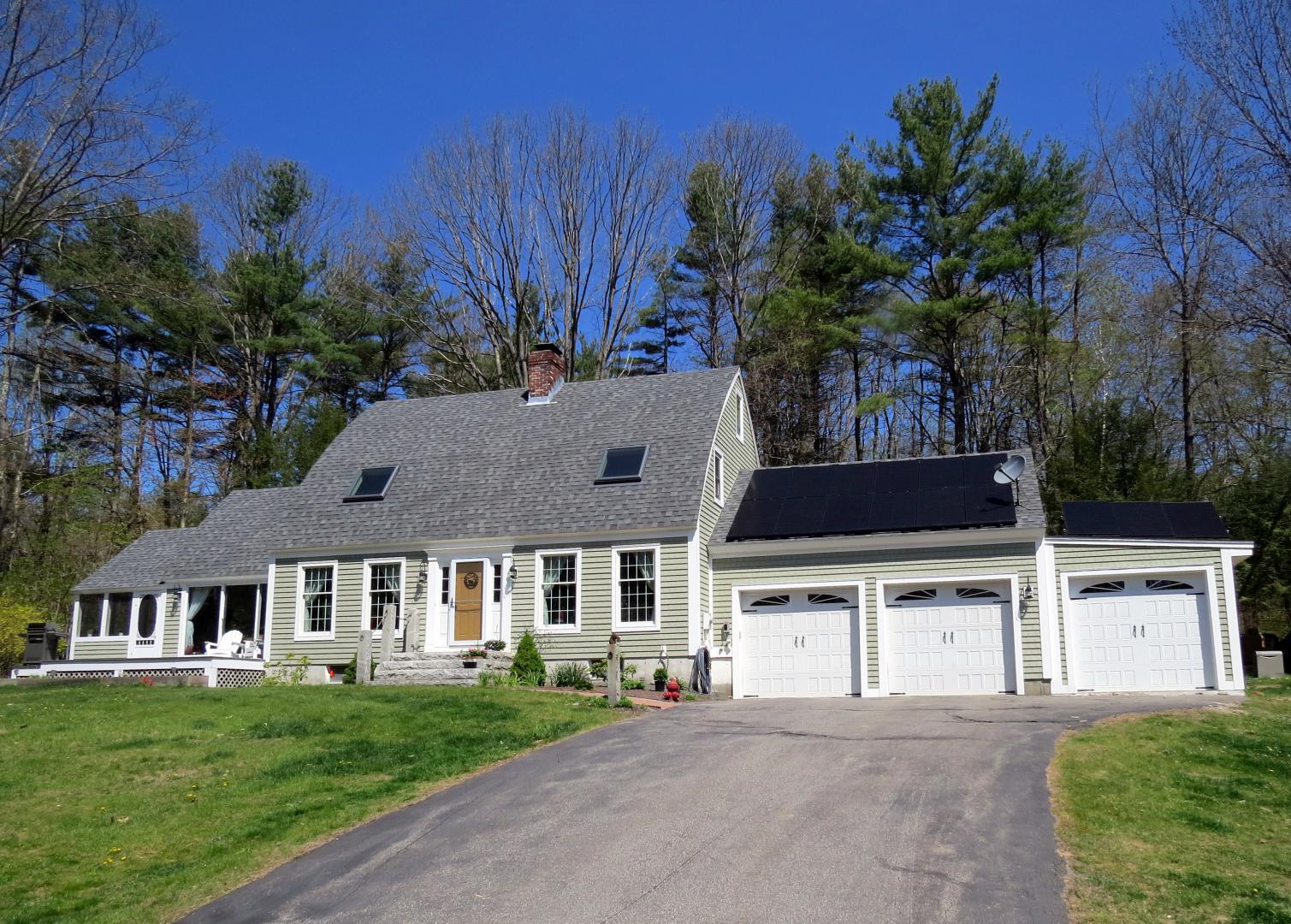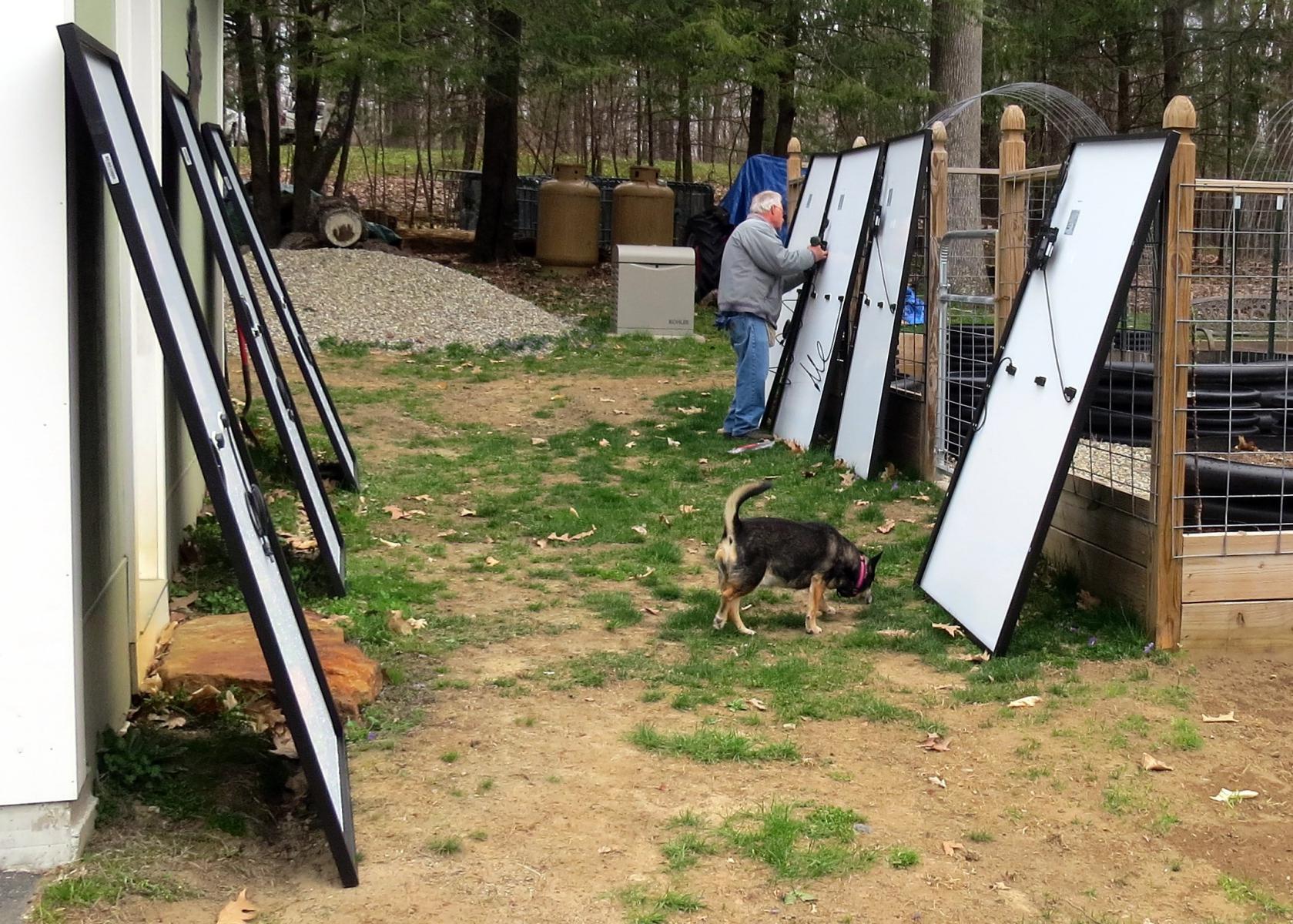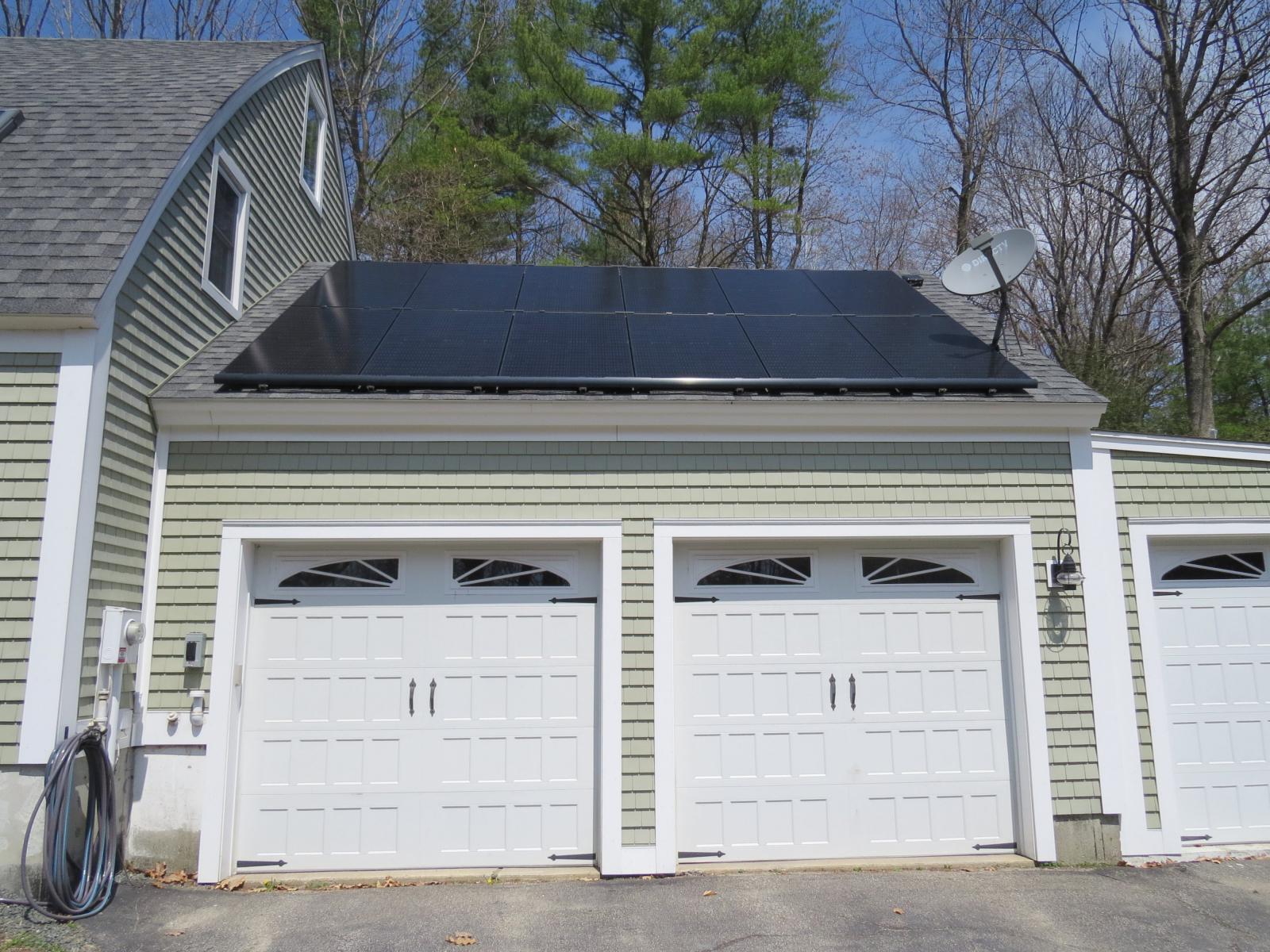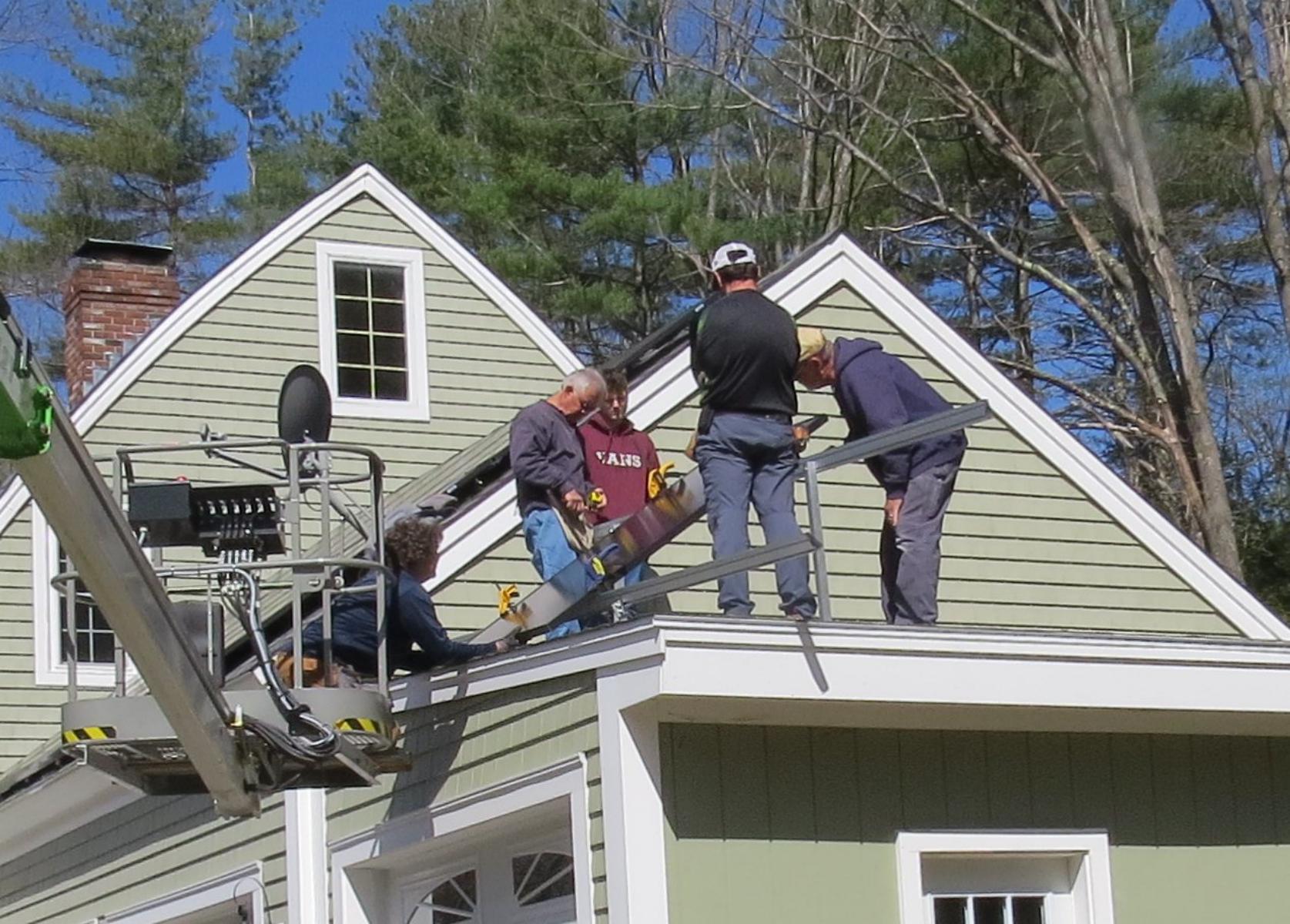
Going Solar
We have wanted to go solar for a while. Several factors contributed to doing it now. Solar is not cheap, so money was a factor. However, there is a 26% federal tax credit available now; we are saving a quarter of the cost. Deciding when to jump into the evolving technology is a challenge too. We have a friend who went solar four years ago, his panels are about 25% less powerful than what’s available today. Four years from now, no doubt there will be even more efficient panels available. The challenge of climate change is a clear and present danger; the scientific community is very clear and unified as to the severity of this existential threat. I came of age in the generation that was famous for saying “if you’re not part of the solution, you are part of the problem”. We felt it was time to act. I hope that this essay will show you our readers what is involved with a solar install and explain some of the nuances of solar technology. I’m no expert but have done a lot of research and learning over the last year or two. My hope is that in sharing this experience with you it will help you make a more informed decision and save you some time and effort should you be interested in going solar.
In early May 2022 we finally got our solar array installed. This has been a long process that started with quotes from several NH solar companies in 2021. We ended up going with the local guy, South Pack Solar (http://southpacksolar.com) based in neighboring Peterborough. South Pack is a small company owned by a very knowledgeable and likeable guy named Greg Blake. Greg’s willingness to explain things and tailor the install to our specific needs and wants was a big selling point.
We opted to be grid tied meaning we could still pull power from the local utility as needed. It also means we sell unused power to the utility when we make more power than we can use. This is what “net metering” means. We do not have storage capability, there are no batteries. Batteries are finicky, expensive and have a finite lifespan. I’m not at all sure that the best possible battery for home energy storage has been developed yet. There is also the very real possibility that the best choice for batteries could be an electric vehicle. I will discuss that further, later in this essay. We also have a fully automatic whole house standby generator. As I have said elsewhere, there are only four houses on our little lane; when there is a power outage we are a very low priority.
So the first question to be addressed in a solar decision is where to put it and how big should it be. The where, for us was a no brainer. Our house faces south and we don’t have enough real estate already, I’m always struggling to figure out where to squeeze in outbuildings, garden space, driveways and family space on our two acres. The house we bought was our dream house; beautiful, well situated and super efficient and green. The two acres it came with was not ideal for all we wanted to do. So we decided to turn the modest amount of land into a challenge: make it work for us, embrace the idea that small is beautiful. The solar needed to be on the roof. Our south facing house sits on top of a hill with open space in front of it; so the roof was ideal.

System size is limited by location, in our case available roof space. The main roof on our house is curved (bow roof cape) and is a structural insulated panel (SIP) design. Our house is foam sandwich construction; there are no 2x6s in the walls or roof rafters. Attaching solar panels to the main roof would be tricky. Fortunately the attached garages are traditional construction… so that’s where the solar belonged. Physical space is part of the equation; the capacity to generate kilowatt hours (kwh) is the other half. Here in NH, your electric bill shows your last 12 months usage. I assume this happens elsewhere or this information can be easily accessed.
Let me explain this with easy to understand numbers. If your home uses 10K kwh per year (which is a plausible number, although we use less), then that should be your solar system’s minimum annual production. I’m approaching this from the “I don’t want to see another electric bill” perspective. That’s certainly one of the big reasons to go solar. Obviously you will make more electricity in the warmer months and less in the winter. When you “export” electricity (because you are making more electricity than you can use in a day) to your utility provider in the summer; you are building a credit to offset the cost of “importing” in the winter. Makes sense, right? Well… there is a bit of a conundrum. The electric rates, set by the legislature and the Public Utilities Commission (PUC) here in NH (and elsewhere) are different for imported and exported electricity. Guess who pays more? Yup, you got it… we do. The utilities argued that they should not have to pay individuals who are producing electricity at retail rates for exported electricity. They lobbied for a wholesale rate and got it. I’m not going to get into whether this is fair or not. What I do know is, this is the way it is. When you “net meter” you pay a higher price for imported electricity than you get paid for the electricity you sell back to the utility.
So… if you are trying to build a credit in the warm months to offset the less productive winter months… a one to one ratio might not work? Indeed it doesn’t. So, most systems are designed to produce say 120% of your expected annual usage. Working with my example of a house that uses 10K kwh per year, you probably should make around 12K a year. This means you can export enough electricity to the utility over the summer to offset the cost of the higher priced electricity that you will have to buy in the winter. OK… that’s not so hard, seems pretty straight forward. For the record you can also request to be paid for the exported electricity. However, you will then need to pay the utility for electricity in the winter. That might seem fine, but the money the utility pays you is imputed as income; you will be taxed on it. I’m planning on using it as a credit.
There are a bunch of other things that are confusing and muddy the water. Solar panels produce DC electricity and your house runs on AC. You need an inverter to convert DC to AC. Then you find out that there are single “string” inverters (big box in your basement) or “micro-inverters” (one behind every panel). If you are a DIY person you are going to have to figure out the best system for your array. I let Greg figure it out, he’s the expert, designing the system is part of what solar companies do. There are many, many panels available that produce different wattages and look different. We wanted a system that blended into the roof and was designed and installed by experts. We put 12 panels on the original garage roof that followed the pitch of the roof. Then we added 6 more panels on the third garage bay that has a very shallow pitch running in a different direction. These panels were rack mounted and tipped up to match the other 12. So, all the panels are tilted at 39° and face south. A couple of the quotes I received had the flat roof panels also mounted following the pitch of the roof. That meant that the panels were looking almost straight up and facing east. Yes, they will catch the morning sun; but they are going to go to bed early! This made no sense to me but the companies were unwilling to tip the panels up facing south claiming windage concerns. I reminded them that the panels were on the leeward end of the house well protected from the prevailing westerly winds and I might add… if set flat, well protected from the afternoon sun as well! I didn’t have to ask Greg to face them south; he designed the system that way. That was another factor in his favor.
Our solar install started the first week of May and was complete by May 10th. We lost a day and a half to weather and the crew did not work on the weekend. Greg and his excellent electrician Bob Gesick were here every day. The other helpers changed a bit from day to day although the delightful Tim Hopkins was also a constant player. We averaged about five workers per day throughout the install.

Getting Started
The panels are bolted to rectangular aluminum plates or flashings that slide up under the shingles and are bolted through the roof. I was assured that the new holes in my roof would not leak; the bolts have rubber gaskets and are siliconed. The plates have standoffs that raise the panels several inches off the roof. Every panel gets a micro-inverter installed on the back of it before it goes up on the roof.

Tim Installing the Micro-Inverters on the Panels
In the photo below the crew is getting the first two panels on the roof of the original garage. You can see the aluminum plates with the standoffs mounted across the roof. The horizontal bottom skirt has been installed as well. South Pack Solar has a very futuristic lift on tracks that can be set up on uneven surfaces to get the crew and panels up to the roof. The lift looked like something straight out of the Jetsons.

Several days in the first twelve panels were complete. While the crew was getting the panels up, Bob was wiring the system. He too punched a hole in my roof and covered it with a waterproof junction box. The panels get wired together and have to come into the house. Bob wired the system through garage attic (cold storage) and down into the original garage. There is an emergency shut off that kills the whole array on the front of the garage next to the electric meter. There is also an independent meter inside the garage that records lifetime kwh production. Then the wire heads to the basement to my service panel for the final tie in. In my case this was made a little more complicated because we have a whole house generator in the mix. It may be a little bit more work, but street power, a whole house generator and solar can all be wired together safely. There was a couple days delay before the flat roof panels could be installed. Greg and crew fired up the first dozen panels and we started making power.

Twelve Panels Up and We are Making Electricity
You should know however, that when there is a power outage, many grid tied systems shut down. Although unfortunate, it is necessary to protect utility workers from voltage feeding out to the street during an outage. This comes as a disappointment to those thinking solar will help them during outages. The exception to this is a grid tied system with battery backup. If you have batteries, the technology is such that you will be able to run your panels during an outage.

Starting the Flat Roof Array Under Bob’s (on the right) Watchful Eye
As I said before, the panels on the nearly flat roof are tilted up to the same 39° as the others. This installation requires a rack mount; there are raised rails that the panels are then bolted to. Due to the footprint of the roof there are two rows of three panels each set as far apart from each other as the roof would permit. This prevents the more southern row from shading the panels behind, particularly in the winter with low sun angle.

Two Rows of Panels on the Flat Roof
So, after about a week of installation, the whole system was done. The local building inspector came by and inspected the system and pronounced it good to go. Another perk of using a solar company is they typically take care of all the permits, Greg certainly did. There is also a permit and agreement with your power utility for the net metering. They actually come in at the end of the process, after they see the building inspectors sign off and replace your existing meter. You get a two way meter that records both imported and exported electricity. It’s early but we have seen days with bright sunshine where we have generated 35 to 40 kwh in a day. Then there have been rainy days with much lower production.
I said earlier that I would touch on the electric vehicle (EV) as your battery storage. This is very real, evolving and interesting. Ford has already taken a bold step in this direction. The new Ford Lightning, the EV version of their very popular F-150 pickup truck is out. Batteries are very expensive and don’t last forever. EV manufacturers are typically warranting the batteries for ten years. Many of us trade our vehicles in before ten years. Ford is selling all their Lightning’s with a two way inverter. What does that mean? Well, you can charge your vehicle with your array during the daytime, but at night… you can reverse it and use your vehicle to run your house. You don’t have to buy expensive batteries for your system. Your vehicle can pull double duty and be your batteries and transportation. Obviously there are some things you can’t do like run your house overnight on your EV and then get up first thing in the morning and drive to a faraway place. For anyone contemplating an off grid build, this could be a game changer.
Before you go, I imagine that some of you are wondering about the cost and return on investment. I crunched a lot of numbers going into this and this is what I can tell you. Based on what we spend on electricity a year it should take about eleven years to pay off the system. But it will likely go a little quicker because I just installed an electric hot water heater. We have been heating our water with our oil furnace. That works well and is efficient in the winter when the boiler is already running to heat the house. In the summer it is not so great and with the recent oil price increases up to $6.00 a gallon, all the more so. The plan is to heat water in cold weather with oil. In the spring I will shut off the boiler (already did it) and heat the water with electricity when the panels are at peak production. I will switch back to oil fired water in the fall. That should reduce our oil consumption significantly and save us even more money and further reduce our carbon footprint.
Another possible concern is how your tax assessment will be affected by adding a solar array. Here in NH it actually goes town by town; it is a “local option”. Fortunately for us, Greenfield like many towns, is solar friendly and offers a 100% Renewable Energy Tax Exemption. The value of our home is clearly increased by adding solar, but our tax assessment will not reflect the change. This was another key incentive for us.
So that’s it for now. We are up and running with solar and will probably give an update later in the year. So thanks for reading and I hope this has been informative and you can use this information to better make your own decision about solar.

Many thanks for this very clear explanation. I have one question, you mention that many grid-tied systems shutdown during an outage so that you don’t back-feed the grid and endanger the workers (the same is done for generators.) Why can’t the link to the grid be disconnected instead during the outage ? This would allow solar generated power to be available to the house during an utility outage. Not applicable for you because of your whole house backup but surely helpful for those with only solar.
Denis,
In its most basic form modern PV systems are equipped with grid tied inverters (or microinverters) that convert the DC electricity produced by the array into AC power that can be used by the building that they serve, exported to the utility grid or both. The inverter is quite a complex gadget in that it has to produce grid quality electricity (typically much better!) in terms of voltage and frequency and stay synchronized with the grid. All grid tied inverters sold in the US are also equipped with an anti-islanding feature so that they don’t export solar generated power back into the grid when the grid is “non-qualified” or just plain off. This feature is necessary to avoid endangering a lineman trying to rectify the problem with the grid. To accomplish this inverters require that two conditions be met in order to function; they must see the presence of the utility grid and have sufficient DC voltage from the array. If one or both of these conditions isn’t met then the inverter turns off. This is why grid tied inverters turn off automatically at night – insufficient DC voltage! This inverter configuration evolved over time and helps keep PV systems reliable and affordable as external switching methods aren’t required. That being said it is possible to configure a PV system in such a way that will allow the creation of a micro-grid within the confides of the building (when the grid is not available) so that the solar will function (during daylight hours) and typically operate on stored electricity at night. We’ve done many of these; they work great but aren’t cheap!
Greg
Many thanks for that explanation Greg
Denis